If this content looks familiar, it’s because we posted this Matt Rinella op-ed two weeks ahead of time. Our intention was to drop it timed to the MeatEater podcast, embedded below, where Matt and Steve get into the value of social media in hunting. We jumped the gun, and then pulled it. Our bad. Well, now, you can read the full essay, unedited, as it originally appeared.
Matt Rinella is a grown-ass man with spicy-ass opinions. While we at FRA do not agree with all of his thoughts presented below, we’ll defend his right to air them till the end. We know one thing for certain: It’s gonna be an awkward fucking Christmas at the Rinella house. – The Editors
Over the past decade, hunters have increasingly publicized pictures and videos of their kills to large audiences on social media. This monumental change in hunting norms occurred gradually and with little thought for its consequences. These consequences are overwhelmingly negative. Don’t get me wrong, I’m all for sharing photos of harvested game with friends and family. I strongly support individuals and organizations that use social media to cover issues of importance to the hunting community. But it is time to unfollow hunters who post pictures of dead animals to hundreds, thousands, or even millions of, mostly, strangers.
Social media has corrupted our motivations for hunting and is risking the future of the very activity we love so much. Traditionally, we hunters took to the woods for hides, horns, meat, personal enjoyment, and a sense of self-reliance. Now, for the first time in human history, many seek a digital harvest. Rather than butchering meat for the freezer or tanning a hide, these kinds of hunters mostly want photos on their iPhones to beam out across the internet. More than cooking and eating what they shoot, they’re interested in exchanging it for likes and followers — and even corporate sponsorships in gear and dollars.

With my last name, this may strike some as a curious position. I’m the brother of Steve Rinella, the founder of MeatEater and maybe the most influential hunter in America today. While I dearly love Steve and am close with some of his coworkers, I’ve come to realize their approach — and the approach of many others — of blending hunting and media, and their efforts to publicize and commodify hunting and wildlife via every available digital platform, undermine hunters everywhere. It’s easy to forget these days that people can remain friends despite vehemently disagreeing, but we’ve managed to do just that.
My argument starts with the fact that, in much of the US, public-land hunting is so overcrowded it’s no longer worth it. The mainstream and hunting media have run articles bemoaning declines in hunter participation for years, but this is utter nonsense. The number of hunters is extremely difficult to determine, and even if hunter numbers have dipped slightly since the 1980s when US Fish and Wildlife Service data indicate they peaked, it’s irrelevant. Existing hunters are hunting more. When I crunched the data, it became clear that hunting license sales increased a whopping 30% between the 1980s and 2010s, and then the COVID-19 hunting boom increased hunter and license numbers even more. So, even if there are a few less hunters, those hunters are buying more licenses and spending more time crowding the woods.
Also, since the 1980s, the American landscape has changed in major ways. The US population size has increased by a third, the square footage of housing per person has doubled, and many former hunting spots are consequently residential neighborhoods now. The US simply doesn’t have the habitat needed to support the wildlife and hunters it used to.
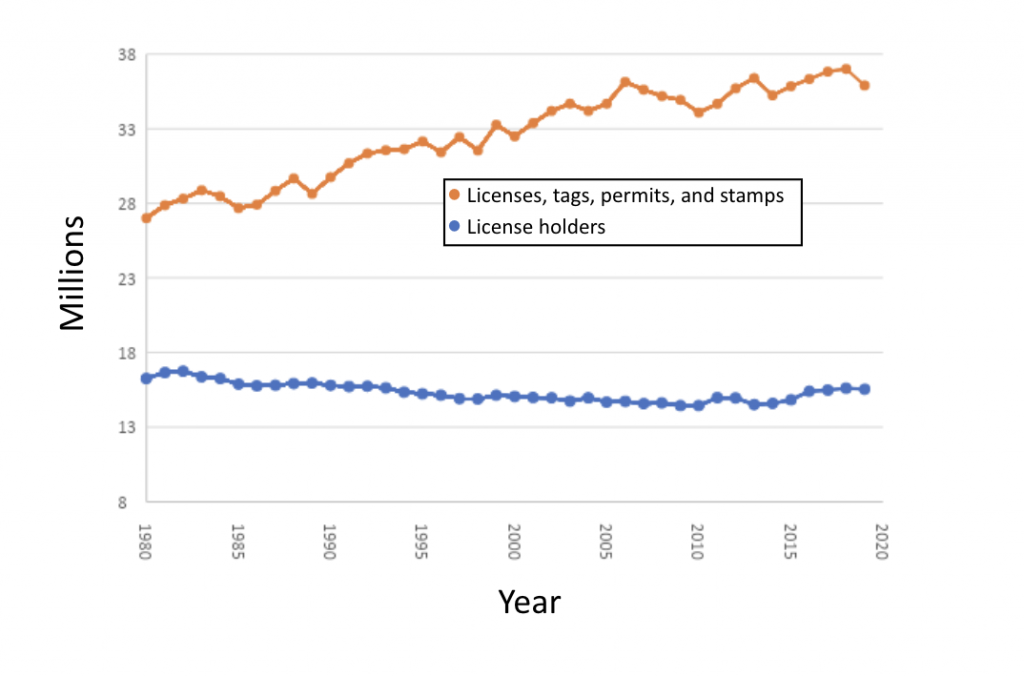
As a result, big game draw odds have plummeted, private lands are increasingly leased for hunting and thus off-limits to the public, and public land hunting often begins with struggling to find parking at the trailhead, followed by struggling to find animals so pressured they suffer from PTSD. According to 2017 survey data, over half of hunters have abandoned spots due to crowding. In short, hunter numbers have grown beyond what the resource can support. I believe social media is largely responsible for this because it draws people afield under false pretenses and encourages hunting for unjust reasons.
I’d be remiss if I ignored my own history with hunting social media. I was never big on posting grip-and-grins online. Years ago, I completely stopped after seriously asking myself why I wanted lots of people to see what I had shot. Upon reflection, I realized bragging was my sole motivation. This troubled me. I’ve always had a low tolerance for bragging by others, so I disliked realizing I was guilty of it myself. It didn’t help that I was bragging about dead animals harvested for food. This seemed more consequential and perverse than the soccer trophies, kitchen remodels, and other inane shit people brag about online.
The Negative Consequences of Hunting Social Media
For proof that social media, and hunting television, are increasing hunter numbers on already overcrowded public lands, consider what hunting influencers sell their followers on Facebook and Instagram and through their TV shows. In addition to hunting products, influencers like my brother sell books that teach rudimentary hunting, game cooking, and backcountry survival skills. Many are now teaching classes where students learn elementary woodsmanship, game calling, map reading, and strategies for applying for tags.
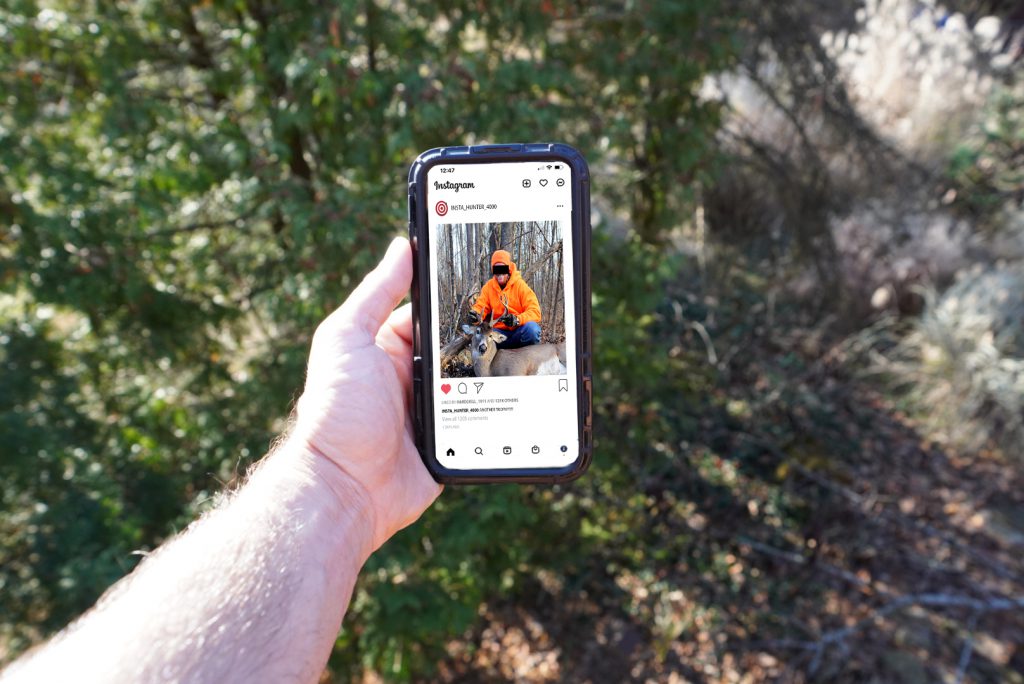
The target audience for all this is clearly hunting-curious nonhunters because seasoned hunters don’t need 101-level how-to content. If you have any doubt that motivating people to hunt and selling them products is big business, consider how many influencers do it. Here, for example, are more than 200 of them on Instagram. In addition to inspiring people to hunt, influencers inspire people to become fellow influencers. They do this partly by example and partly by teaching the relevant skills to do so, like how to attract sponsors and how to film their hunts. In other words, influencers motivate people to hunt for the same shitty ego- and profit-motivated reasons they hunt themselves.
Top hunting influencers like to call themselves conservationists, but the fact of the matter is influencers are terrible for habitat. No matter how great areas look in terms of feed and cover, game can’t live where there are hunters on every ridge. That’s exactly the situation influencers have created in their quest for more hunter-customers. Most influencers don’t have to hunt the places they’ve blown up because they largely hunt private land, take expensive trips to remote hunting destinations, and enter pricey limited tag lotteries throughout the US and beyond.
Influencers like to believe they’re elevating our reputation among the nonhunting public, but social media has severely damaged our reputation among nonhunters as well as reduced hunting opportunity. For example, read about the banning of grizzly bear hunting in British Columbia or watch The Women Who Kill Lions on Netflix. Or Google something like “social media hunting controversy” and settle in for a very long read.
Moreover, hunting influencers routinely engage in selfish, greedy behavior that poses threats to our reputation among nonhunters. Generating enough content to gain big followings and attract sponsors necessitates gobbling up tags and killing more than one needs. Top influencers commonly kill three or more elk a year along with a variety of other game. If you’re reading this, you’re probably following several of them right now.
If I was a nonhunter doing a quick scan of hunting social media, my gut response would be one of shock. It is a cornucopia of carcasses with zero explanation of what they plan to do with all that meat. If you’re a nonhunter reading this, please believe many traditional hunters are as disgusted by all this greed as you are. Traditional hunters believe wild game is a precious resource, and we harvest only what we need to eat between seasons, thereby increasing the chances for other hunters to take an animal.
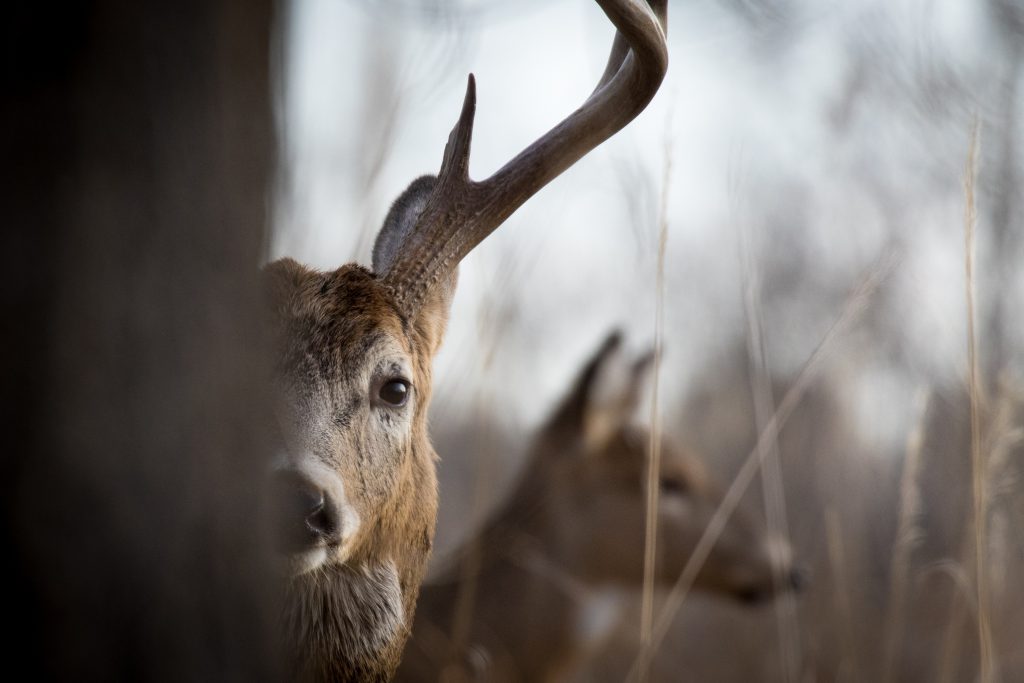
Hunting social media is also horrible for public access. Friends growing up in the rural Montana community where I live remember freely hunting the surrounding ranchlands. A tractor repairman friend remembers having permission to hunt a 100-plus-mile swath running from eastern Montana all the way to South Dakota. Access started dwindling in the late 1980s with the advent of cable-TV hunting shows. These shows increased the appeal of hunting to the point where people became willing to pay big money to lease private hunting lands. Nowadays, it’s laughable to think banging on doors will result in hunting permissions in this prairie country because years of social media hype have made un-pressured ground so rare and monetarily valuable that landowners can’t resist charging for it. Hunting influencers like to pretend fellow hunters are their stakeholder group, but their real stakeholders are large landowners and the hunting industry.
Social media hunters further degrade opportunities for traditional hunters by deceiving people into thinking hunting is something it’s not. When famous hunting personalities pay to kill elk on ranches that are off-limits to the public, what they’re doing is more like slaughtering livestock than hunting wild elk. If that’s what gets them off, great, but putting videos of their “hunts” on social media without indicating they are stalking areas off-limits to the public dupes legions of newbies into thinking publicly accessible basins are brimming with bulls just waiting to be shot. Nothing says, “let them eat cake,” quite like using social media to inundate traditional public land hunters with throngs of aspiring hunting influencers while stalking quasi-domestic wildlife on private ranches.
I can’t understand being proud enough of this fantasy hunting to film it or brag about it on podcasts. Aren’t the videos a tacit admission one lacks the tenacity for real hunting? Many traditional hunters think so. I’d rather kill a one-eyed calf with a limp on public land than a half-tame giant that’s only accessible to people who can afford to pay for it. At a bare minimum, these “hunters” should explain to their followers that they’ve paid to stalk glorified cattle at hunting amusement parks. Then they could give a virtual tour of the lodge and a cost breakdown.
Here is perhaps the biggest problem with hunting social media: It is blatantly dishonest. It doesn’t take much hunting experience or familiarity with wound-loss data to see that social media hunters regularly hide the sorrowful side of killing animals for sport and meat. Social media shows too many smiling faces and too few fading blood trails. I know hunters that upload their grip-n-gloats before the meat cools when things go right but post nothing at all when they wound and lose game. Even major hunting publications encourage this lying by omission by discouraging hunters from posting videos of poorly hit game.
“Keep on hunting, but post nothing in 2022. This will prove you’ve moved past the attention-seeking toddler stage in your development as a hunter and now go afield for mature reasons.”
Showing only the happy parts attracts people to hunting on false premises, which is deeply unfair. It causes people to gear up and head afield thinking they’ll simply pull the trigger and drag their winter meat back to the truck. It’s not a true representation. The cold, hard fact is that pulling the trigger sometimes results in wounded animals and severe regret. This is especially true for new hunters. If influencers insist on recruiting new hunters and selling them gear, they should at least have the decency to ensure these hunters go into it with their eyes wide open. Of course, honest social media that consistently shows wound loss would provoke public outrage. As such, the influencers have painted themselves into a corner: Showing only the happy parts is lying and showing everything could destroy hunting. If they want to stop lying while maintaining our right to hunt, the only option is to take hunting offline.
What’s Lost if We Stop Posting Harvested Game?
As long as there have been cameras, hunters have been taking pictures with their game animals. Before the internet, these photos were displayed in albums and sometimes on walls in sporting goods stores. While the pictures aren’t new, the motivations for showing them, and the numbers and types of people that see them, have changed dramatically. Instead of a few family members or hunters in bait shops seeing the images, they are broadcast to everyone willing to look at them across the internet. This mass posting of dead game has become so common that it’s tempting to think something virtuous might be lost if we stop doing it.
To determine what’s at stake, I recently asked eight hunters who are widely followed on social media why they show us what they shoot. If they can’t explain why looking at what they kill is indispensable to the future of hunting, who can?
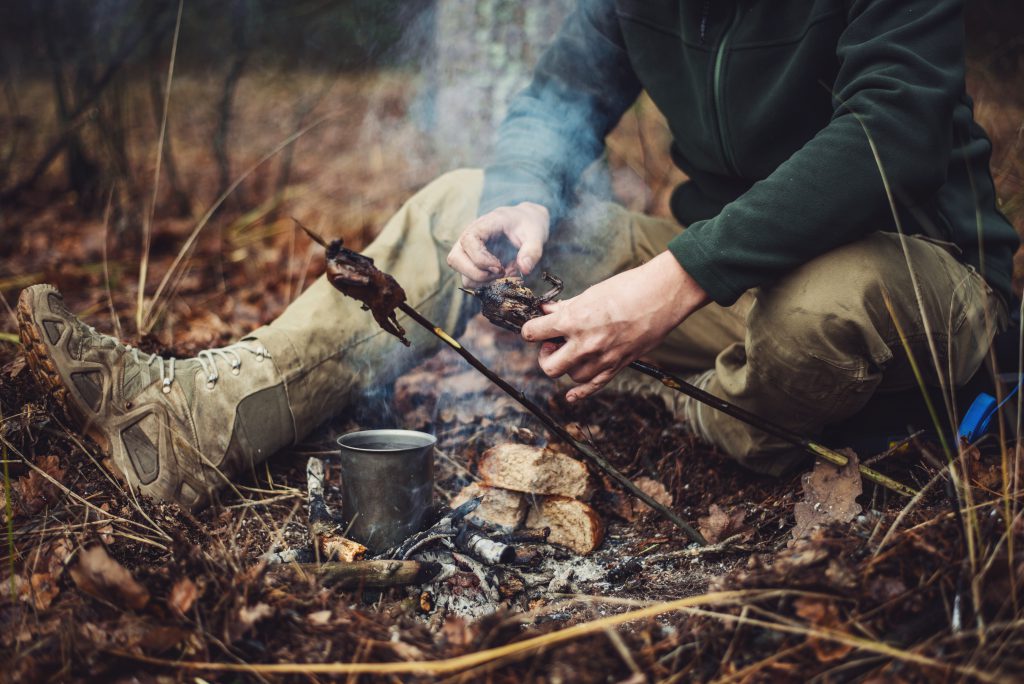
Their responses included “picture storage” and “informing friends what I’ve been doing.” Both are goals easily achieved without hundreds or thousands of followers. Most other motivations I heard about clearly don’t benefit the hunting community, such as “gaining credibility as a hunter” and “being addicted to the adoration” of followers, as two interviewees put it. One said, “It’s only worth [posting dead game] if people buy something,” and six of the eight admitted bragging was a motivation.
One motivation mentioned to me that demands more serious consideration is “celebrating the animal.” This could ostensibly benefit the hunting community as it could be seen as a positive to nonhunters watching. But do they mean celebrating the animal’s magnificence? If so, why not stick to photos of living animals? All animals look way better alive. Do they mean celebrating the animal’s life like we do loved ones at funerals? If so, why don’t we post pictures of open caskets to celebrate departed loved ones? When people say they show thousands of people what they shoot “to honor the animal,” much as I want to believe their motives are pure, all I hear is “to honor my abilities.” They’re honoring themselves, not the animal.
One interviewee said his motivation was to “portray hunting honestly” as a counter to all the dishonest depictions on social media and television. I’m positive this interviewee provides warts-and-all depictions of real hunting. I know the guy. He once released a heartbreaking video involving an elk he wounded. Nevertheless, it’s impossible to regularly consume hunting social media without regularly consuming bullshit, and there’s no way to distinguish the truth from the half-truths and outright lies.
Another motivation cited by the social media hunters I spoke with was promoting acceptance of hunting by illustrating field-to-table connectivity. To me, it’s a stretch to think nonhunters learn anything profound that revolutionizes their views on hunting when we post dead deer followed by a recipe for venison osso buco.
What Should We Do About It?
My brother Dan has joked about developing an internet-enabled rifle scope that automatically uploads kill shots to a hunter’s social media feed. His joke illustrates how hopelessly entangled social media is with hunting. Prospects for disentangling the two seem dim. Once before, however, hunters did abandon a common practice that wasn’t serving them. Through the 1980s, visibly transporting big game on vehicles was common. Then, in the 1990s and early 2000s, sportsmen’s groups, hunting magazines, and game management agencies began encouraging hunters to conceal carcasses to avoid offending nonhunters. The campaign seems to have worked some because I don’t see as many predominantly displayed deer on the highway as I used to.
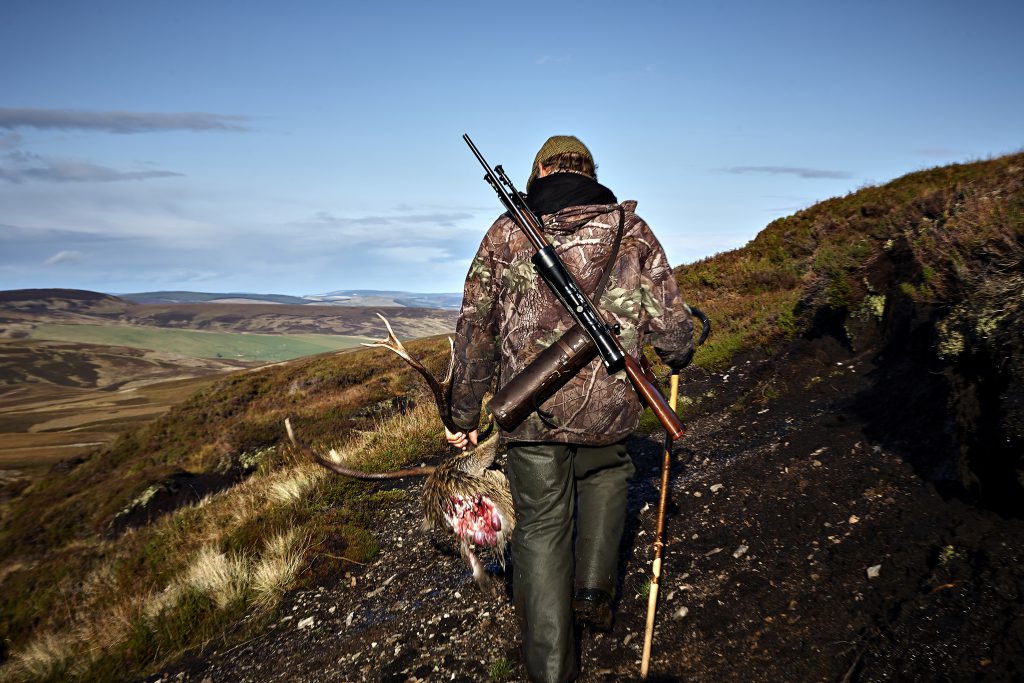
If we unfollow hunting social media, we’ll do much more than avoid further public relations problems. We’ll be better, happier, and more successful hunters. In addition to no longer completely wasting time and suffering other downsides of staring at phones, we’ll stop contributing to a system that:
- Incentivizes hunting for the wrong reasons
- Diminishes draw odds
- Crowds public hunting grounds
- Makes wildlands uninhabitable for wildlife
- Pays landowners to lock out the public
- Degrades our reputation among nonhunters
The solution to all this is simple. I’m appealing to hunting influencers: Stop posting it. I’m appealing to hunting content consumers: Stop following it. I’m appealing to all hunters everywhere: Get on board with my New Year No Post Challenge. Keep on hunting, but post nothing in 2022. This will prove you’ve moved past the attention-seeking toddler stage in your development as a hunter and now go afield for mature reasons. More importantly than proving it to others, you’ll prove it to yourself. Is hunting still fun without the likes?
When it comes to hunting, we should take our lead from the Ju/’hoansi people of the Kalahari Desert, a hunter-gatherer tribe that the anthropologist Richard Borshay Lee studied in the 1960s and 1970s. Ju/’hoansi customs strongly encouraged humility, as quotes from a tribesman illustrate:
“Say that a man has been hunting. He must not come home and announce like a braggart, ‘I have killed a big one in the bush!’ He must first sit down in silence until I or someone else comes up to his fire and asks, ‘What did you see today?’ He replies quietly, ‘Ah, I’m no good for hunting. I saw nothing at all…maybe just a tiny one.’ Then I smile to myself because I know he has killed something big.”
The contrast between Ju/’hoansi hunters and social media hunters couldn’t be sharper. These humble tribesmen were reluctant to tell their closest friends and neighbors they had killed something. Conversely, social media hunters tell the whole world. The Ju/’hoansi had the right idea. The proper attitude for the hunter is one of understatement and humility. Hunting is about seeing without being seen. Hunting is best done quietly.
Read Next: The Critical Importance of Being Uncomfortable



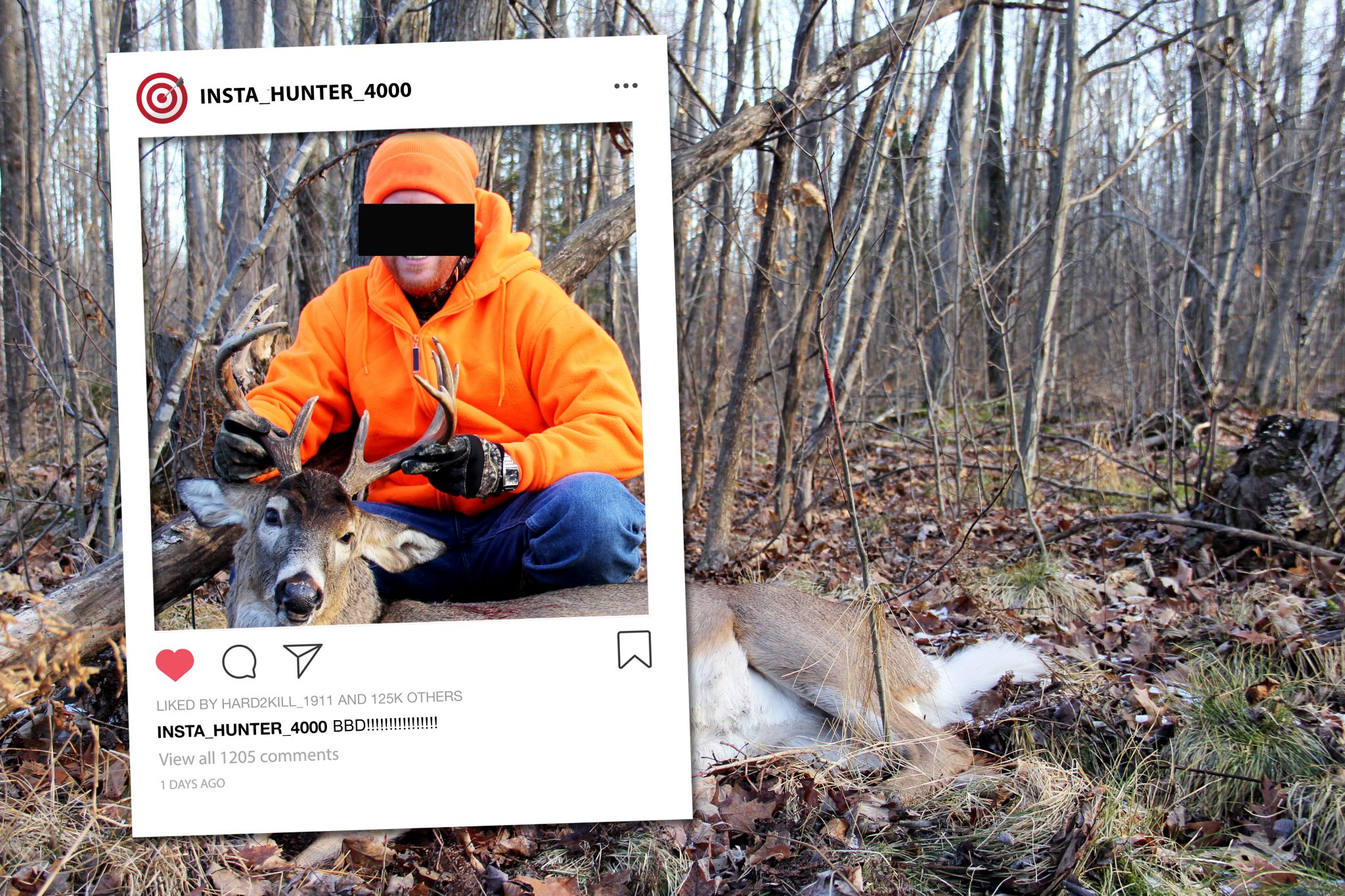
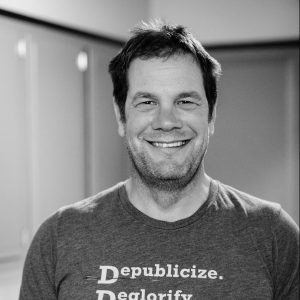
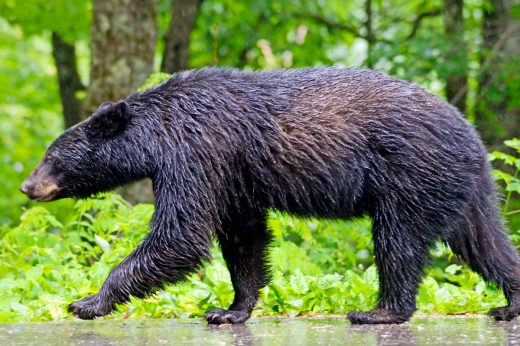
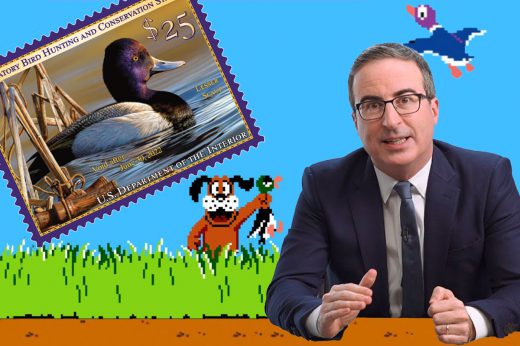
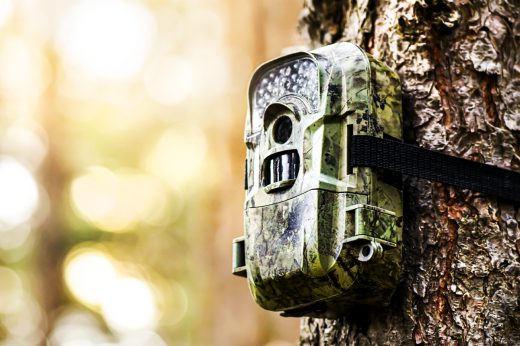


Jason Tatafu says
That’s the best hunting article I’ve read in years! Can’t agree with you more on everything you’ve talked about. Thank you
Johnny Beane says
Matt makes a lot of good points in this Op-ed. As someone who views social media as a sometimes harmful and meaningless endeavor, I can only preclude that it has some negative affect on the hunting community that I hold so dear.
Bruce says
Well stated. Good point. I’m in.
Derek says
The bottom line of this is agreeable. There are people posting dumb shit on social media that makes hunters look bad. I think 99.9% of hunters would agree. The rest of the article is nothing more than holier than thou, comply with my standards or else, moral superiority bullshit.
Trevor Franklin says
If you’ve been hunting Montana public lands for as long as you have, how are these newly recruited hunters a threat to you and your hunting experience at all? If they’re as new to hunting as you say they are, I would seriously doubt they’d be able to get the job done like you should be able to. In my opinion your whole article has more of a selfish tone rather than a tone that would be considered ethically or morally positive towards wildlife conservation. Your whole article wasn’t actually written to help wildlife habitat on public lands, you wrote it for clicks, money, and whatever else. You’re out of your mind if you think having 50% less hunters is a better conservation act than using PR funds.
John says
Thank God somebody has called it out maybe all of the companies that support Hunting Fishing and outdoor activities should start buying up land to provide a place for all of these people to go
John says
You will always know a hunter hunts for the wrong reasons when you show him a picture of a deer or an elk that you’ve killed and he asked you what it’s scored
Grant says
Excellent piece. You’ve summed up how myself and many others feel about this topic. I’m 36, never been on social media, and only share directly with friends and family if I’m lucky enough to harvest an animal. Majority of times it’s to share a recipe and subsequent picture of the meal. The idea of grip and grins has never sat well with me, smiling next to a dead animal. We all understand the exuberance after success. But people need to dig deep and ask themselves why they need that picture, and why they post it. If the purpose is to remember the experience, isn’t that what the mount is for? Would you post just pictures of mounts and be satisfied? No. You want your smiling face next to your accomplishment, you want as many people to see YOUR accomplishment, and if you in turn make a profit from that……… are you a really an outdoorsmen? The ideal of a humble hunter, self reliant and tough as nails, tackles the extremities, finds peace in the woods, psychologically breaks down environments and evolving situations, and secures harvest to sustain themselves while also being knowledgeable in its preparation to go beyond simple satiation. Why are you smiling with a dead animal? Why are you posting it? You either want others to know you’re an outdoorsmen because you care about peoples opinion about you, or you want lots of views for money. You are a celebrity. You aren’t the good ol boy hunter/angler/backwoods men persona you’re trying to depict. You are a celebrity. Acceptance, attention and or money. Ask yourself why you take that picture. Thanks again keep saying the truth.
John says
The whole thing is simply this people that aren’t currently Hunters that watch social media or hunting TV become enamored with what they see they want to join the crowd and the only way they know how is to buy things that the sponsors show which is precisely how marketing Works however everyone forgets that the space that we have to hunt dwindles due to the fact of overcrowding from social media Hunters sometimes these Hunters higher Outfitters Outfitters then lease up more private land taking it out of the equation for the public to ask permission and go hunt I’m wondering does anybody tell these new Hunters about the difficulty to find public access to hunting maybe the social- media gurus should start their show by saying public accessibility is nearly impossible nowadays and you will have to hire an Outfitter or maybe we should offer classes such as firearm safety but to teach new Hunters how to have landowner relations so that they will want to allow them to hunt and not lease it out to Outfitters
Brian Bamonti says
I read the article, and listened to the podcast. I willfully admit that I am a full on consumer of Steve Rinella’s complete body of work; print, video, and social media. I am a big fan of the Meateater brand and the content that they produce every year.
I believe it took a decent amount of courage for Matt to say what he had to say, especially when and where he said it. It certainly isn’t easy arguing a point to a room full of people who mostly disagree with you. I believe good points where made on both sides of the debate.
I will also admit to bragging a bit on social media in the past, and I feel like I have started to get away from it, especially in the last year. Matt said something towards the very end of the podcast that pretty much sums up his argument: shut up and do it. In other words, why do we feel the need to brag about ALL of the things that we do (especially when we do them well) ALL the time?
I also feel that what Steve Rinella and the Meateater brand are trying to accomplish (and I believe a member of the staff said it off mic during the podcast) is to start putting out QUALITY outdoorsmen, and not QUANTITY. I have learned an exorbitant amount of information over the past 5 years from watching the show, reading the books, watching clips on YouTube, and listening to the podcast. I feel that because of that content, it has made me a more QUALITY outdoorsmen.
So, at the end of the day, I agree with you both, and I will continue to support YOU BOTH. Happy Holidays to you all.
Jim Morgan says
I’m thankful that Matt is willing to stand up and speak the truth. I’m guilty of enjoying the meateater podcast regularly and I listened to this latest one. I wish they would have spent more time discussing the issues Matt presents. Its clear the industry as a whole has an interest in recruiting new hunters for their revenue stream and its clear that instafluencers are a vehicle to do that, IMO there isn’t any room for debate on that point. Hunting has largely been ruined by this and this alone. We live in a time where private ground is less and less available to the average person due to alarming development rates, family farms being sub dived over and over and ‘sold to the highest bidder’ leases. Public land is so crowded that the level of frustration it causes takes every bit of enjoyment out of it and keeps most traditional sportsmen home at this point and the higher quality units now take lifetimes to draw. Its disappointing to see the meateater crew deny that the ‘do it for the gram’ crowd aren’t out there for the wrong reasons and that they haven’t impacted the over all landscape negatively. We need less hunters not more. Thank you Matt.
Tom H says
This took guts to write. I enjoyed it, but I’ll admit I had issues with social media to begin with. I feel there is real truth to your thoughts here and have voiced some of your ideas in the past. Let’s face it, the “facebook hunting groups” tend to be cesspools. However I do think it’s not all doom and gloom. I was pointed to the article because of the MeatEater podcast episode, I’ve been a loyal fan of Steve since I found his first book long before ME, and I cannot imagine a better steward of hunting, especially to represent it to non/anti hunters. And I’m afraid without proper advocacy by good stewards we could actually be in danger of losing it all.
You’re right though, in many ways… we need to do better
Mike Prater says
Spot on Matt!!!
montgomery P michals says
Damn Matt you could not be more wrong. Who gave you the right to make that call? I hunt pressured Wisconsin Public that is only getting more and more crowded. Yet I dig deeper and I kill deer every year – they are all posted and I will continue to you have motived me to do more! You sound very different from what you intend. You did a poor job of stating your position. I’d love the opportunity to talk to you more in depth. When your done looking at all my posts of dead animals get in touch with me.
Your little brother is going to whip your behind! LOL
Your way off base on this one but I think I understand why and how this happened.
Charlie Wagner says
I agree with Matt and do not have a social media account because of all the b.s. and worthless, waste of time and energy most people post about. To me the world was better before you could get instant gratification. The world of hunting was better before all the boundries of no tresspassing, when a neighbor and you could share each others land and be happy for one another when one of you harvested an animal instead of getting angry when you shoot the big one they were after or a young one they would have passed. I do however enjoy watching Steve’s show not for the kill but for the commaradary and info he gives. Another person I enjoy watching is Dan Infalt because he shows everything from no kills to bad shots and successful hunts. He has so much good info on hunting and scouting (at least for my area in WI) it has made me a better hunter.
Phil says
I have said from the beginning of hunting videos that I feel they are akin to pornography. Sure I like sex, you bet I do! But, it’s a private matter and best left sacred between two people. I do however like sharing photos with friends back and forth. It celebrates the harvest (between friends). That I believe is honest and appropriate to “dance around the fire” together.
Phil Muller
Daniel McKenzie says
Easily one of the most self absorded written articles I’ve ever seen published.
Obviously Matt wasn’t around in the 70’s hunting the Western US, I was and I can say things have changed for the better. People who have no interest in hunting aren’t looking for that content. Sure there are the try hards out there, but they’ve always been out there. The world evolves, life around us changes, we can change and strive to improve it, or die off.
Paul says
Couldnt agree more. Thank you
Ken McBroom says
Great article
chuck says
Couldn’t agree more and have been saying the very-same-thing for years …